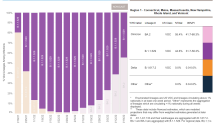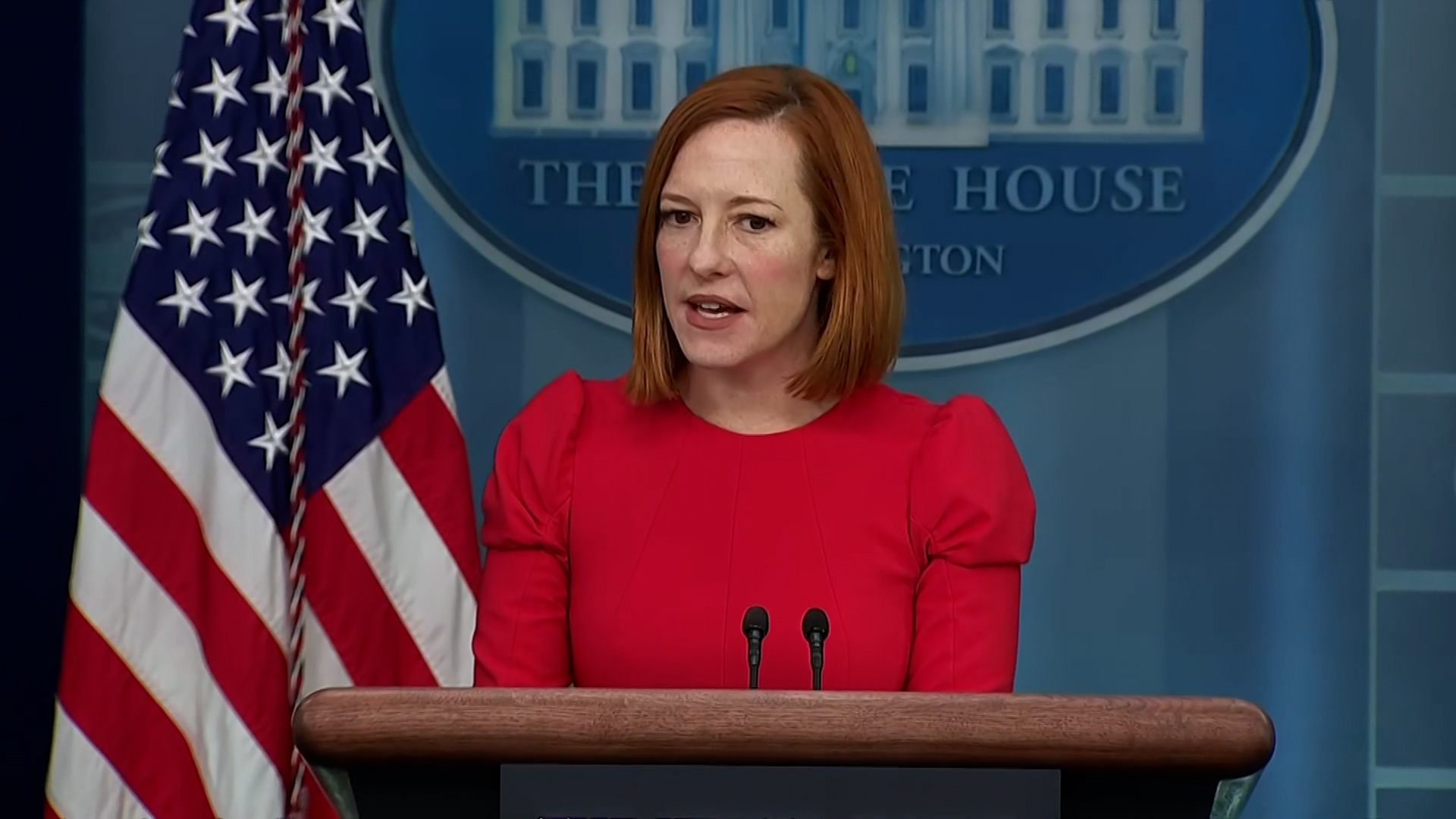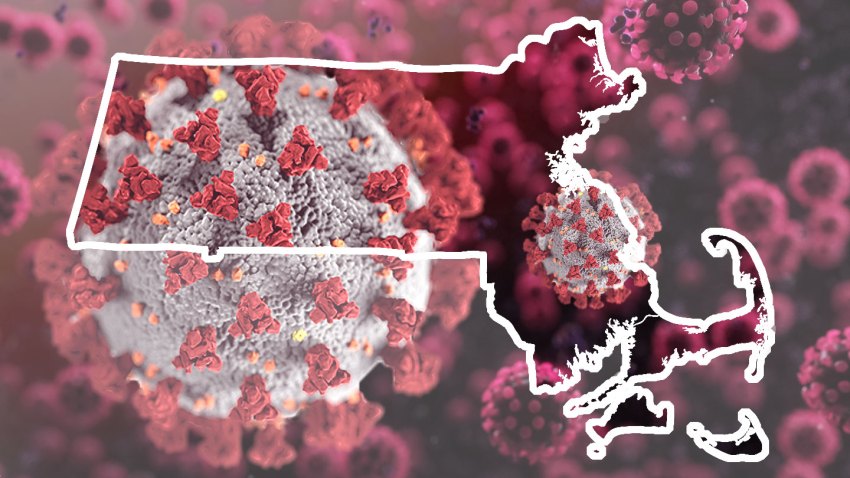What to Know
- Another COVID variant is contributing to increasing cases across America once again, fueling fresh worries as the pandemic recovery appears to hit an unprecedented stride
- According to the CDC, the "stealth" omicron variant, BA.2, accounts for 55.4% of COVID circulating in New England right now; that compares with 34.9% of new infections nationally
- At this point, it's unclear if BA.2 is linked to more severe COVID cases or is more vaccine-resistant but WHO says it is "inherently more transmissible; a case uptick, but no major resurgence, is expected
Rising COVID infections associated with the so-called "stealth" omicron variant BA.2 are fueling fresh leeriness about the state of the pandemic in Massachusetts and across the country, just as life as we now know it is beginning to return to normal.
WATCH ANYTIME FOR FREE
Stream NBC10 Boston news for free, 24/7, wherever you are. |
According to the CDC, that variant accounts for 55.4% of COVID circulating in New England. By comparison, it's responsible for 34.9% of new infections nationally.

Get updates on what's happening in Boston to your inbox. Sign up for our News Headlines newsletter.
What is the stealth omicron?
So how worried should you be? Not very, experts say.
On Friday, the Biden administration's incoming COVID czar Dr. Ashish Jha said he wasn't expecting the latest variant to trigger yet another national surge in infections, given the overwhelming prevalence of those vaccinated and boosted.
More data is needed to determine whether the BA.2 variant poses a greater threat in terms of case severity, but the World Health Organization has already said it is "inherently more transmissible" than the original omicron strain that besieged the globe in November. For now, experts say to expect a case uptick but no major resurgence.
Top Boston doctors told NBC10 Boston it's still unclear what effect the BA.2 subvariant will have on the region's fight against COVID, though they are keeping a close eye on what is happening in other parts of the world.
"This is further evidence that the pandemic is not synchronous. It doesn't happen all together at the same time in all countries across the world," said Dr. Daniel Kuritzkes, Brigham and Women's Hospital's chief of infectious disease. "What we are seeing is this wave of omicron finally making its way into Asia, which had been relatively closed off to travel and commerce previously."
Boston Medical Center's Dr. Sabrina Assoumou agreed with her colleague. She said officials should use this surge in China to prepare here at home.
"This is a time where we should prepare and make sure we get as many people vaccinated as possible to prevent another surge here," she said.
New variants are expected to emerge and will continue to do so because that's how viruses work, experts have said throughout the pandemic. Most of them are not more dangerous in terms of severity or contagiousness, but a handful certainly are.
Massachusetts has seen a decline and leveling off of COVID-19 cases since the omicron peak in January, prompting towns, cities and school districts to weigh lifting pandemic safety restrictions like mask mandates.
Massachusetts health officials announced 1,693 new COVID-19 cases Monday, a number that included three days due to the weekend, and seven new deaths. The state's seven-day average positivity rate came in at 1.68% Monday, the same as Friday.
But after several weeks of declines, the number of COVID cases reported in Massachusetts schools rose from 1,717 to 2,022, an increase of 305 week over week. And a COVID outbreak last week at Peabody Middle School in Concord led the school to cancel classes and close school on Friday to allow sick students a chance to recover and to curb the further spread of the virus.
"We know that BA.2 is circulating in Europe and in Asia, and although percentagewise it's increasing here, it's not yet having a big impact in terms of any kind of upswing," Kuritzkes said. "But we are seeing some unsettling trends in terms of the amount of virus being detected in sewage, which could be a warning that there's a spike to come."
Is BA.2 more severe?
National data from the CDC clearly shows the latest infection spike, though as is the case in New England, the agency's risk assessment for the vast majority of America remains quite low.
The increasing case trends are evident globally, too.
The number of new coronavirus deaths reported worldwide fell by 17% over the last week while COVID-19 infections rose, reversing a decline in cases that first began in January, according to the WHO.
In the U.N. health agency’s weekly report on the pandemic, WHO said there were more than 11 million new COVID-19 infections last week - about an 8% rise - and 43,000 new deaths. The number of COVID-19 deaths globally has been dropping for the past three weeks.
The biggest increase in cases were seen in the Western Pacific and Africa, where infections rose by 29% and 12% respectively. Elsewhere, cases dropped by more than 20% in the Middle East, Southeast Asia and the Americas. In Europe, cases inched up by about 2%.
WHO said those numbers “should be interpreted with caution.” It noted that many countries are changing their COVID-19 testing strategies as they exit the acute phase of the pandemic, and are testing far less than previously, meaning that many new cases are going undetected.
What are the symptoms of BA.2?
Medical experts say the symptoms for BA.2 are similar to those seen in many COVID infections.
These can include:
- Fever or chills
- Cough
- Shortness of breath
- Fatigue
- Muscle or body aches
- Headache
- Loss of taste or smell
- Sore throat
- Congestion or runny nose
- Nausea or vomiting
- Diarrhea
But a CDC report released late last year showed that omicron tended to cause the following symptoms:
- Cough
- Fatigue
- Congestion
- Runny nose
For some people, coronavirus causes mild or moderate symptoms that clear up in a couple weeks. For others, it may cause no symptoms at all. For some, the virus can cause more severe illness, including pneumonia and death.
Most vaccinated people either have no symptoms or exhibit very mild symptoms, according to health officials, and the virus rarely results in hospitalization or death for those individuals.




